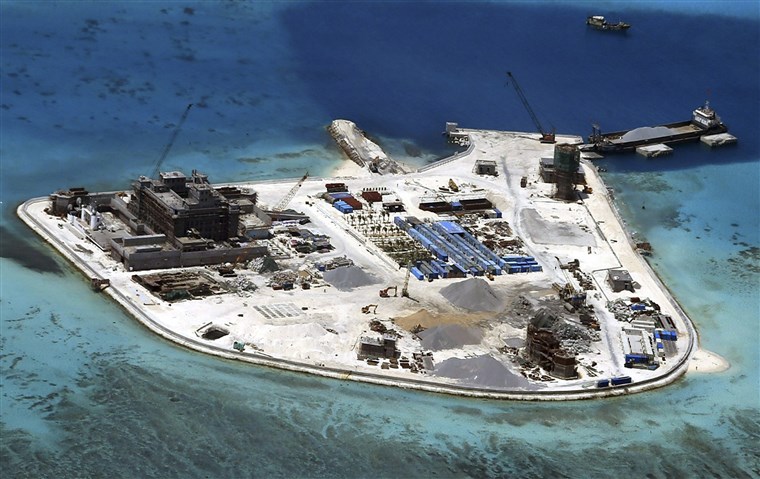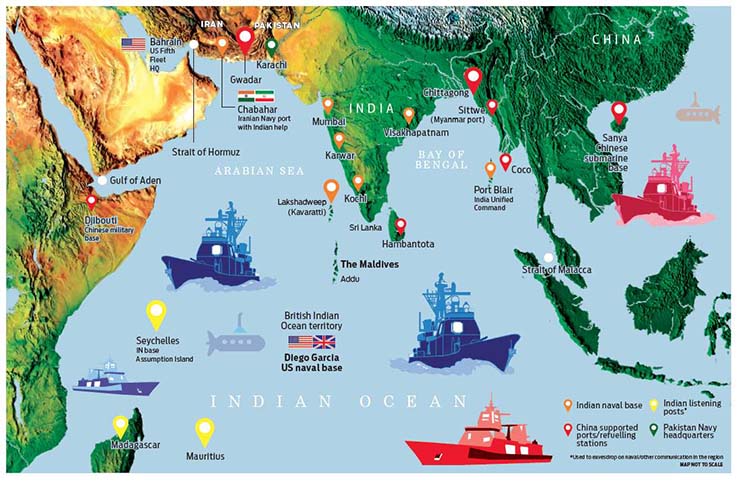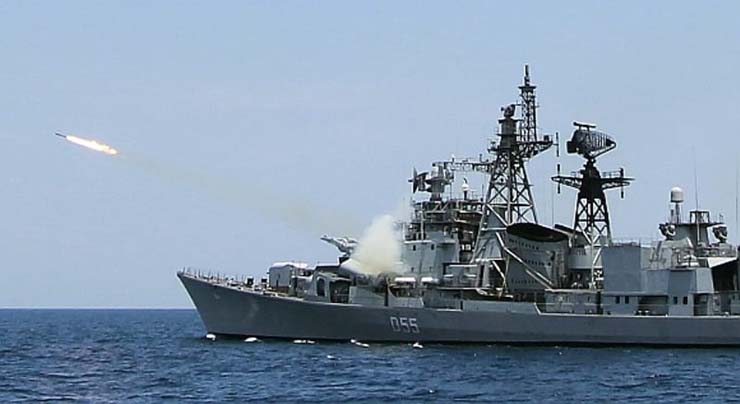
With China focusing on increasing its naval strength and seeking to dominate the Indian Ocean Region (IOR) developing naval facilities in Myanmar, Sri Lanka and Pakistan along with planning to build naval infrastructure in Seychelles, it is indeed a signal for India to focus on building its maritime strength.
For the first five decades of India’s independence, the country’s geographical advantage in the Indian Ocean and its limited interests in the East had made it adopt a lackadaisical approach to maritime security in the Indo-Pacific region.
However, Beijing’s foray into the Indian Ocean is indeed a cause of concern for New Delhi and what the Commander of the US Pacific Fleet Admiral John Aquilino, which also oversees the Indian Ocean region, once remarked that Chinese deployment of aircraft carrier battle groups in the region is a distinct possibility in the near future and “none of that should surprise anyone” should indeed be a cause of concern in strategic circles of this country.
China’s growing naval presence in the region and anti-piracy operations in Gulf of Aden and other out of area operations is indeed a worrisome issue. The turf war between the two navies, as both nations further prosper and seek greater role in regional dynamics, is only set to grow.
“No nation has invested as much as China in shipbuilding. It is a challenge; we keep a close eye on their presence and deployments… it is here to stay,” observed former Chief of Naval Staff Admiral Sunil Lanba describing China’s growing presence in the Indian Ocean as a challenge on which India is keeping a close eye.

He referred to the presence of an estimated six to eight Chinese naval ships in the northern part of the Indian Ocean at any given time as well as submarines.
In the light of these developments, India’s ambitious Strategic Partnership (SP) programme for building six conventional submarines received a setback as a second foreign firm is considering the possibility of pulling out of Project 75 India (P-75I) after Swedish firm SAAB is in the matter that needs to be resolved.
While the company had responded to the defence ministry’s Expression of Interest (EOI) earlier, sources in the firm said it has found the project “completely complicated”.
“We will have to wait and see how things evolve. It has been going on for 10 years,” a company top executive said.
Under the P-75I initiative, the six conventional submarines will be equipped with Air Independent Propulsion (AIP) systems. South Korean firm Daewoo Shipbuilding and Marine Engineering, Naval Group (France), TKMS (Germany), Rosoboronexport (Russia) and Navantia (Spain) have also been extended invitations to place technical bids for the contract.
All foreign firms have flagged concerns.
Defence major SAAB withdrew from the project last month, saying there has to be a rethinking on the government’s policy.

“It is a decision we have made due to the customers’ requirements regarding the time schedule and requirements related to the SP policy with its unbalance between our possibilities to have control and our obligations and liabilities,” said Ola Rignell, Chairman and Managing Director of SAAB India.
Defence sources further said all foreign Original Equipment Manufacturers (OEMs) have flagged concerns about the strategic partnership. Under the SP policy, an Indian vendor will hold 51 per cent stake in the project, thus taking away control of the special purpose vehicle (SPV) that is to be formed with the foreign OEM.
The OEMs have argued that the policy makes them liable for any malfunction. They cannot guarantee quality products and also abide by the timelines as sought by the government.
Admiral Aquilino during his visit to India had at a meeting with Navy Chief Admiral Karambir Singh and pitched for joint patrols between India and the US in the contentious South China Sea while criticising the One Border One Road (OBOR) initiative of China.
“I think the increased military build-up threatens partners and countries in the region,” he said.
Asked if he has seen a decrease in China flexing its muscles, he said, “I don’t think I have. I have seen continued bullying of nations in the region. I have seen islands or rocks turned into man-made islands, militarised despite the conversation being there of defensive purposes.”
– The author is a senior journalist and media consultant.








